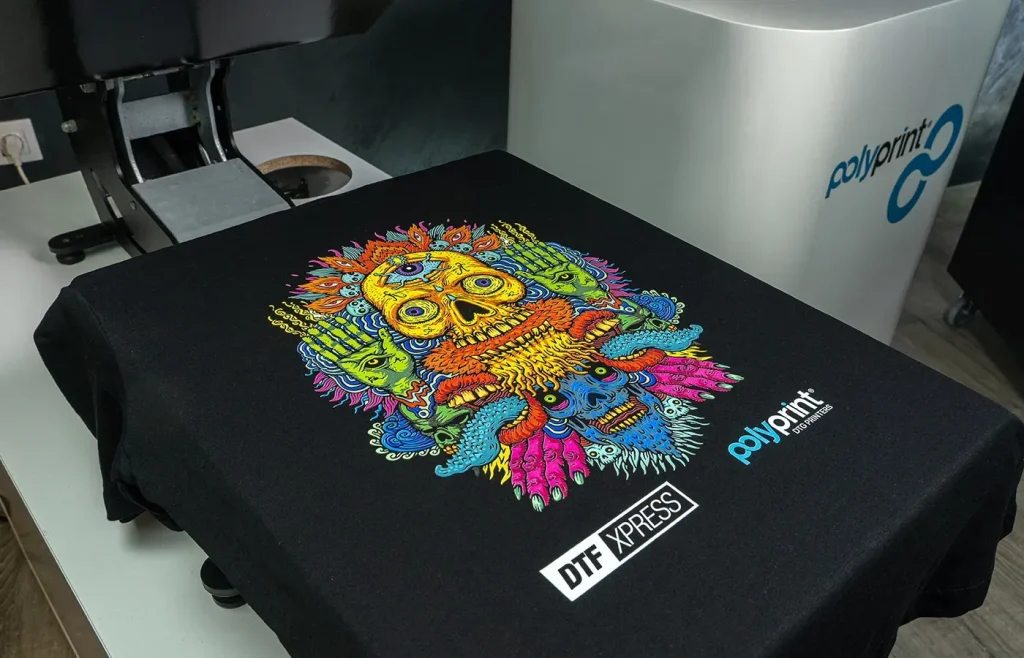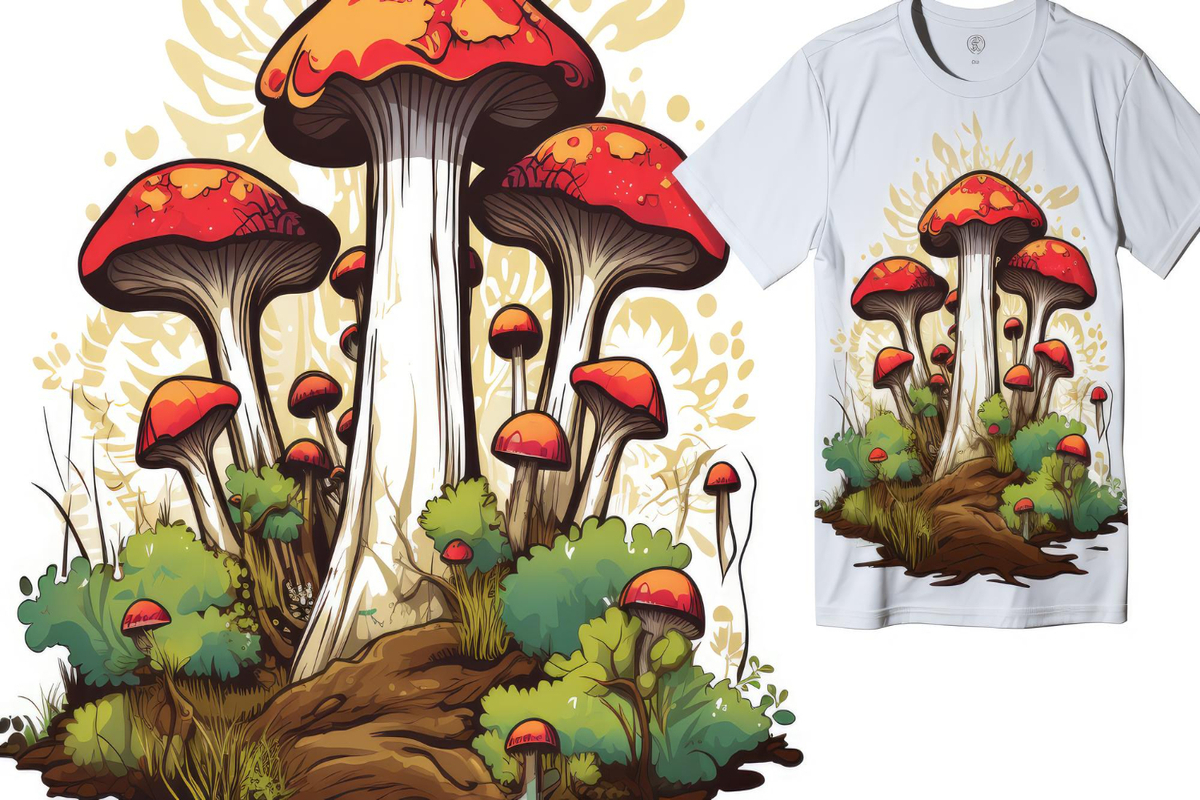DTF printing, or Direct-to-Film printing, is revolutionizing the textile industry with its innovative approach to producing high-quality designs on a variety of fabrics. This groundbreaking technology combines efficiency and versatility, allowing businesses to create vibrant prints that are durable and detailed. As we delve into DTF printing, you’ll discover essential tips for successful implementation and the necessary equipment to get started. Moreover, sustainable DTF printing practices are emerging as a significant consideration for brands looking to reduce their environmental impact. Join us as we explore how DTF technology is transforming the way apparel is designed and produced, and unlock the potential it holds for your business.
In the realm of modern printing techniques, Direct-to-Film (DTF) technology stands out as a game changer for those in the fabric and clothing sectors. This method involves transferring vivid graphics using specialized films, offering a unique solution that surpasses traditional printing approaches like screen printing. With DTF printing, businesses can achieve remarkable detail and color vibrancy on an expansive range of textile materials, catering to diverse customer demands. By understanding the intricacies of this innovative technique and learning various DTF printing tips, companies can implement effective strategies for success. As consumer trends shift towards personalized and sustainable apparel, the adoption of DTF technology positions businesses favorably within this competitive landscape.
What is DTF Printing and Its Advantages?
Direct-to-Film (DTF) printing represents a significant advancement in textile printing technologies, allowing for vibrant and high-quality prints on a diverse range of materials. This method not only offers flexibility in terms of fabric types but also boasts impressive durability and exceptional detail, making it a preferred choice for businesses looking to stand out in a competitive market. DTF printing has the capability to produce intricate designs that are not easily achievable with traditional methods, thus broadening creative possibilities for designers and entrepreneurs alike.
In essence, DTF technology provides a cost-effective solution for creating custom apparel, as it eliminates the need for extensive setup or minimum order requirements common in other printing methods. With the rise in consumer demand for personalized and unique clothing, DTF printing equips companies with the tools necessary to meet these needs efficiently, making it a revolutionary addition to the textile industry.
Essential DTF Printing Equipment
Selecting the right equipment is crucial for successful DTF printing implementation. Businesses should invest in printers specifically designed for DTF applications, such as those from reputable manufacturers like Epson or Brother. These printers not only deliver high-quality output but also support a variety of film types, thereby improving production efficiency. Additionally, ensuring that the printer is compatible with robust design software will streamline the graphic preparation process, enabling quicker turnaround times for custom orders.
Equally important is choosing an appropriate heat press. A durable heat press allows for uniformity in temperature and pressure during the application of transfers, which is essential for producing consistent results. Companies should prioritize features that enable temperature control, even pressure distribution, and quick recovery times to optimize productivity. Investing in quality equipment may incur higher initial costs but will yield greater long-term returns through enhanced print quality and reduced waste.
Preparing Graphics for DTF Printing Success
High-quality graphics play a vital role in the success of DTF printing. Utilizing software like Adobe Illustrator or CorelDRAW helps designers create those intricate and high-resolution designs that catch the eye. It’s important to pay careful attention to color profiles and resolution settings to ensure the printed designs closely match the intended outcomes. This level of detail in graphic preparation can significantly enhance consumer satisfaction and help brands build a loyal customer base.
When preparing graphics for DTF printing, businesses might also consider conducting tests on different designs and color applications to see how they translate onto various fabrics. Experimentation during this stage can provide valuable insights into the best practices for achieving stunning results, allowing businesses to refine their offerings and tailor them to consumer preferences.
Material Compatibility in DTF Printing
One of the standout features of DTF printing technology is its versatility regarding material compatibility. This printing method works exceptionally well on cotton and cotton blends, ensuring vibrant prints that last. However, businesses should be aware that printing on synthetic fabrics such as polyester may require specific inks for optimal results. Conducting material tests before full production can help companies identify which fabrics perform best with their chosen DTF setup.
Understanding material compatibility not only allows businesses to deliver better quality prints but also enables them to expand their product offerings. By experimenting with various fabric types, companies can appeal to a wider demographic, catering to diverse customer needs and preferences. This knowledge is essential for maintaining a competitive edge in the ever-evolving textile market.
Mastering DTF Pressing Techniques
Mastering the pressing techniques in DTF printing significantly impacts the overall print quality. Ensuring your heat press is set at the right temperature, typically between 300°F and 320°F for a duration of 10 to 15 seconds, is crucial for effective transfer application. Inconsistent temperature or pressure can lead to failed prints or designs that don’t adhere properly, which could frustrate customers and diminish a brand’s reputation.
It’s advisable for businesses to conduct trials to refine their pressing techniques, as every fabric and print type may require slight adjustments. By documenting these settings and outcomes, companies can develop a standardized process that ensures consistent quality, which is especially important when handling high volumes of orders.
Sustainable Practices in DTF Printing
As sustainability becomes a growing focus within the textile industry, integrating eco-friendly practices into DTF printing can differentiate a brand. Many providers now offer sustainable inks and transfer films, allowing businesses to minimize their environmental footprint while still producing high-quality products. Emphasizing these sustainable practices can resonate with eco-conscious consumers, enhancing brand loyalty and attracting a customer base that values responsible manufacturing.
Companies looking to fully capitalize on sustainable DTF printing should consider adopting a holistic approach that extends beyond materials. This can include implementing waste reduction strategies, optimizing the efficiency of production processes, and educating customers about caring for their products to prolong lifespan. By prioritizing sustainability, businesses not only contribute positively to the environment but can also enhance their market position in a landscape increasingly driven by green consumerism.
Frequently Asked Questions
What is DTF printing and how does it work?
DTF printing, or Direct-to-Film printing, is a modern method used for applying vibrant designs directly onto fabrics. It involves printing designs onto a special transfer film, which is then heat-pressed onto various materials. This process provides greater versatility and durability compared to traditional methods like screen printing or Direct-to-Garment (DTG) printing.
What equipment is necessary for successful DTF printing?
To achieve optimal results in DTF printing, it’s essential to invest in specific DTF printing equipment. This includes a DTF printer from reputable manufacturers like Epson or Brother, alongside a quality heat press. Selecting the right equipment ensures high-quality output and efficiency in the printing process.
Can I print on any fabric with DTF technology?
DTF technology is compatible with a wide range of fabrics, particularly cotton and cotton blends. However, synthetic fabrics like polyester may require specific inks to achieve the best results. Testing various materials is recommended to determine compatibility and ensure high-quality prints.
What are some tips for preparing graphics for DTF printing?
When preparing graphics for DTF printing, use graphic design software such as Adobe Illustrator or CorelDRAW to create high-resolution images. Pay close attention to color profiles and resolutions to enhance print accuracy. Properly prepared graphics are crucial for achieving detailed prints that captivate consumers.
How can I ensure consistent quality in my DTF prints?
Consistent quality in DTF prints can be maintained by adhering to best practices in the pressing process. This includes using the correct temperature settings (typically between 300°F to 320°F) and ensuring even pressure during heat pressing. Mastering these pressing techniques is vital for reliable and high-quality production.
What sustainable options are available in DTF printing?
DTF technology supports sustainability through eco-friendly inks and films. Many suppliers offer sustainable materials, allowing businesses to reduce their environmental impact. By choosing these options, companies can appeal to environmentally-conscious consumers while maintaining responsible production practices.
| Key Point | Details |
|---|---|
| Introduction | DTF printing is revolutionizing the textile industry with its efficiency, versatility, and vibrant prints. |
| Understanding DTF Technology | Involves printing onto transfer film and heat-pressing onto fabrics, enabling higher durability and more detailed prints. |
| Equipment Selection | Choose printers designed for DTF with software support and a reliable heat press. |
| Preparing Your Graphics | Use high-resolution designs with proper color profiles, enhancing print accuracy. |
| Material Compatibility | Conduct tests on fabrics; DTF works best with cotton and blends, while polyester needs specific inks. |
| Pressing Techniques | Set heat press to 300°F-320°F for 10-15 seconds, ensuring even pressure for successful adherence. |
| Post-Processing Care | Allow prints to cure and educate customers on care to extend product lifespan. |
| Market Trends | DTF market is growing due to demand for personalized custom apparel; stay updated on best practices. |
| Sustainability Considerations | Opt for eco-friendly inks and materials to minimize environmental impact and appeal to conscious consumers. |
Summary
DTF printing is a groundbreaking technology that empowers apparel and textile businesses to enhance their offerings and meet consumer demands. By mastering the necessary equipment and techniques, such as graphics preparation, material compatibility, and pressing methods, companies can fully leverage the potential of DTF printing. As sustainability and customization trends grow, those who embrace DTF will not only improve operational efficiency but also gain a competitive edge in the market. By adopting strategic practices and staying aware of the evolving industry landscape, businesses can secure their success in this dynamic field.



